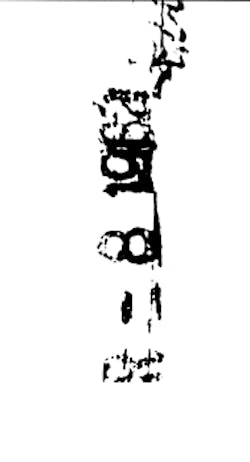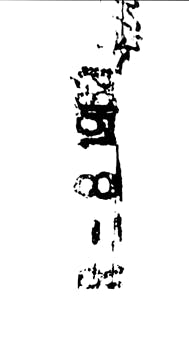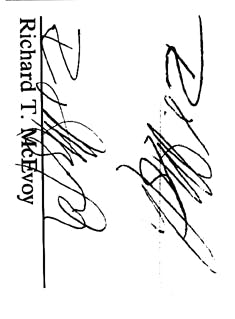Writing Fake Notes?
Specialists can employ a variety of tools for spotting phony documents that are under scrutiny for malpractice suits
Bonnie L. Schwid, RDH
If your records are subpoenaed for a malpractice suit or audit, does terror strike you? What is the first thing you would do? Many people "tidy up" their records and destroy their credibility.
If you forgot a procedure or forgot to note one, it is too late to record it now. You are much wiser to admit you forgot than to edit the records. There is always a cross-reference with other office records, or the document itself will incriminate you.
This article shows you how forensic document examiners work and discusses preventive measures to protect your records and yourself.
Forensic document examination is a procedure that helps the court or jury understand how a document was created or whether the writing or signature is authentic. One attorney describes the technique as "verifying the pedigree of the document." Most document cases in general involve the identification of a writer. When examining medical and dental records, however, most problems concern alterations or discrepancies.
Examinations begin with a visual study and are aided by various instruments, including a binocular microscope, measuring instruments, oblique and transmitted light, infrared scanning equipment, and thin layer chromatography to differentiate inks. In addition, an electrostatic-developing instrument deciphers indentations in paper made by pressing top of the paper.
Training to become a document examiner is accomplished by internship for two or three years in a crime or police laboratory or with other document examiners in a mentorship arrangement. Seminars, research, and intensive self-study supplement training for everyone.
While there is no specific college course that teaches document examination at this time, a degree in the physical sciences or a master`s degree in forensic science is useful.
Skills needed for the forensic field parallel those for dental hygiene - a scientific approach, keen observation, attention to detail, and an ability to recognize and differentiate forms. Both fields are teaching professions - one educates patients while the other convinces juries or judges.
How are documents examined? When an attorney files a malpractice suit or personal injury case, a main source of information is the client`s records. The attorney scrutinizes the record for inconsistencies, alterations, and late or missing entries. If they find self-serving statements or suspicious entries, they consult a document examiner.
She meant to type the notes
The following anecdote shows how document examination reveals an altered document. A hygienist swore in a deposition that she wrote notes while the dentist discussed severe periodontal disease with a patient, who was referred to a periodontist. The hygienist claimed she used a small legal pad as she wrote the notes, tearing off each of the three sheets of paper as she progressed. She testified that she used the same pen and wrote the notes all at one time.
She claimed she intended to type the notes, but she put them in the file and forgot about them. Two years later, when a malpractice suit was filed for neglect, the hygienist reported that she suddenly remembered her notes and discovered them in the back of the file. The notes exonerated the dentist by relating the conversation with the patient as clear and pertinent, when, in fact, the dentist never advised the patient to see a periodontist.
The problem with the records became obvious when it could be demonstrated that one of the pages was on a different type of paper than the other two, and the wording did not quite fit the space. Therefore, while she might have made notes during the dentist`s conversation, she later changed them to add the information about the referral. The dentist`s records showed no followup to the recommendation. The periodontist had no record of having seen the patient, and the business records reflected that the patient did not return to the dentist for care for another year.
What could have been an adequate defense that the patient had not followed instructions became a disaster for the dentist. His insurance refused to pay the claim because of the fraudulent entry.
This case, as in most medical or dental malpractice cases, did not go to trial. "It is hard enough to defend a mistake, but it is impossible to defend an altered record," claims a litigation defense attorney. In some states, if a record is proven to have been altered, the settlement offer must be tripled.
A forger`s style is your style
Record analysis consists of studying the usual style of the people who make entries and determining whether the writing is normal or looks contrived. Writing is such a complex movement that a skilled writer only pays minimal attention to the formation of the letters and far more attention to the message.
When a person forges a signature or adds an entry, there is a certain amount of added concentration. Its effect on the writing is to slow it down, causing the writing to appear drawn and artificial. An added entry is generally crowded into an inadequate space, making it compressed and awkward.
In a forgery attempt, the forger either tries to simulate a signature free-hand or copy it meticulously. Think of trying to walk naturally in someone`s footsteps in the sand and you will recognize the difficulty of simulating the rhythm in someone else`s writing movement. Besides the rhythm, a forger has to contend with normal variations in writing over the years and for each time she writes. Not only does the forger have to try to copy those variations in a natural movement, but eliminate her own writing characteristics.
On top of all that is the consideration of the content and context of the writing situation as well as any other factors that affect handwriting. Even if you alter a document by adding information at a later time, your writing varies from the original entries. The harder you try to make it natural and like the first entries, the worse it looks. Then you either have to recreate the whole record or deal with a record that can be proven to have been altered.
How to dot the i`s
How can you protect yourself from being accused of altering a record? If you have to insert information into a record within a few minutes, days, or months following the date it refers to, place it in a normal sequence and not the day you are writing it, referring back to the date you should have entered it.
This type of entry is common. Never add an entry after a suit is filed. Avoid using correction fluid and self-serving statements that exaggerate or otherwise appear forced. Maintain consistency for all entries for all patients.
A document examiner looks for a natural writing style, consistency with other entries in the record, and chronological sequence with the rest of the record. If you must make a correction, a simple line through the error with the correction written after or just above it in the same ink is recommended. Initial your correction. The writing should not be self-conscious or crowded.
Remember, if you show that X-rays were taken, they should be in the file. "I lost the X-rays" is not an acceptable excuse. In addition, there should be corresponding billing and receipt of payment information.
Finally, if you have made a mistake in treatment or have changed the record, admit it immediately. It will be far worse when it is discovered by a lawyer or expert.
Bonnie L. Schwid, RDH, is a board-certified forensic document examiner and president of Anagraphics Inc. in Milwaukee, Wisconsin. She is a past president and executive board member of the Association of Forensic Document Examiners. She obtained a certificate in dental hygiene from Marquette University in 1953. Although she no longer practices dental hygiene, she maintains her license, finding it useful in cases where dental records are in question.
HOW SLEUTHS FIND THE FAKES
After a patient died of mouth cancer, a dentist changed a date with correction fluid to show that the patient had been treated in 1981, a year before detectable lesions were found. But the correct date of 1982 was photographed by using a high-intensity light beneath the document.
The forged signature at top can be discerned by comparing it with the writing style of the real signature below.


